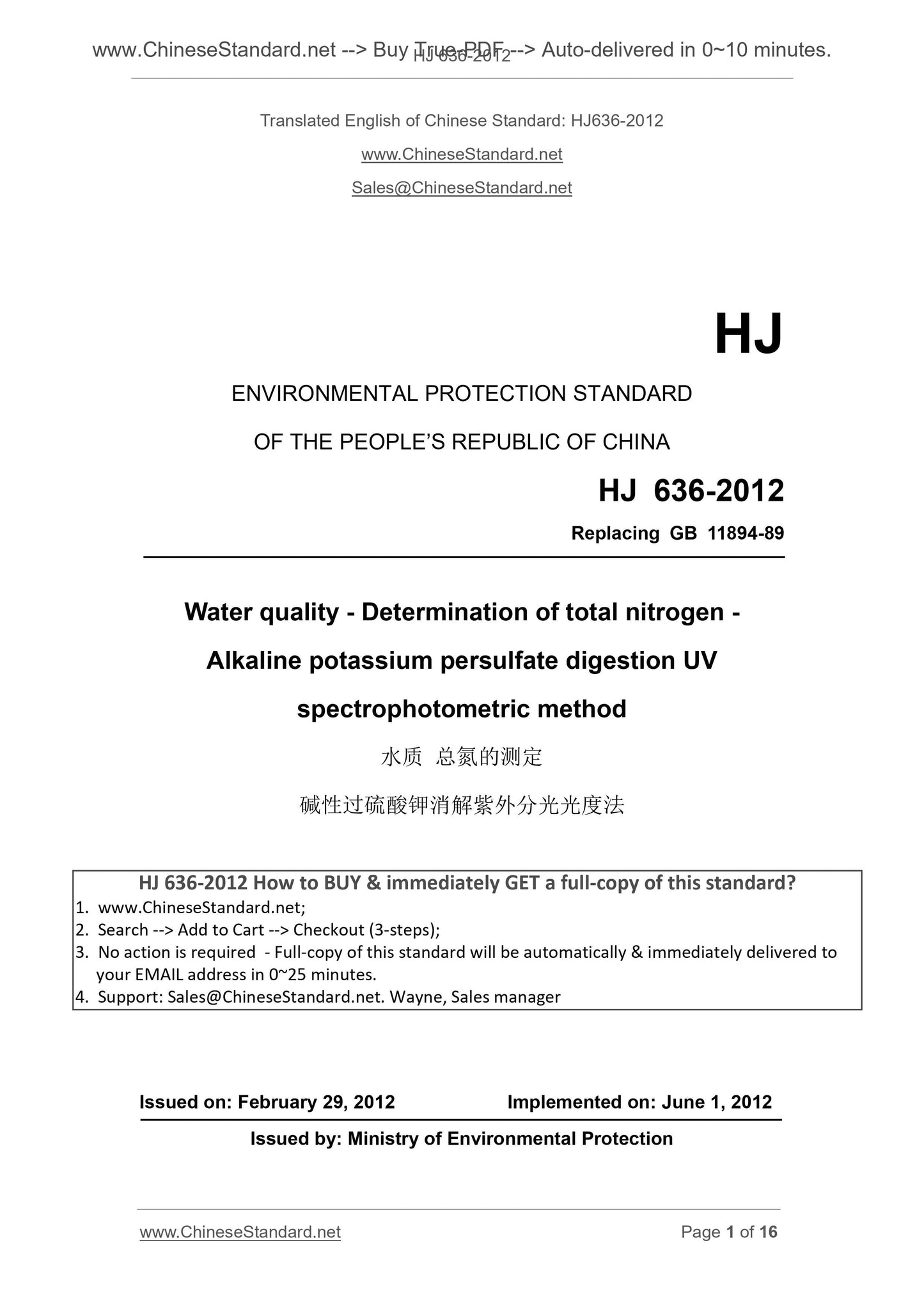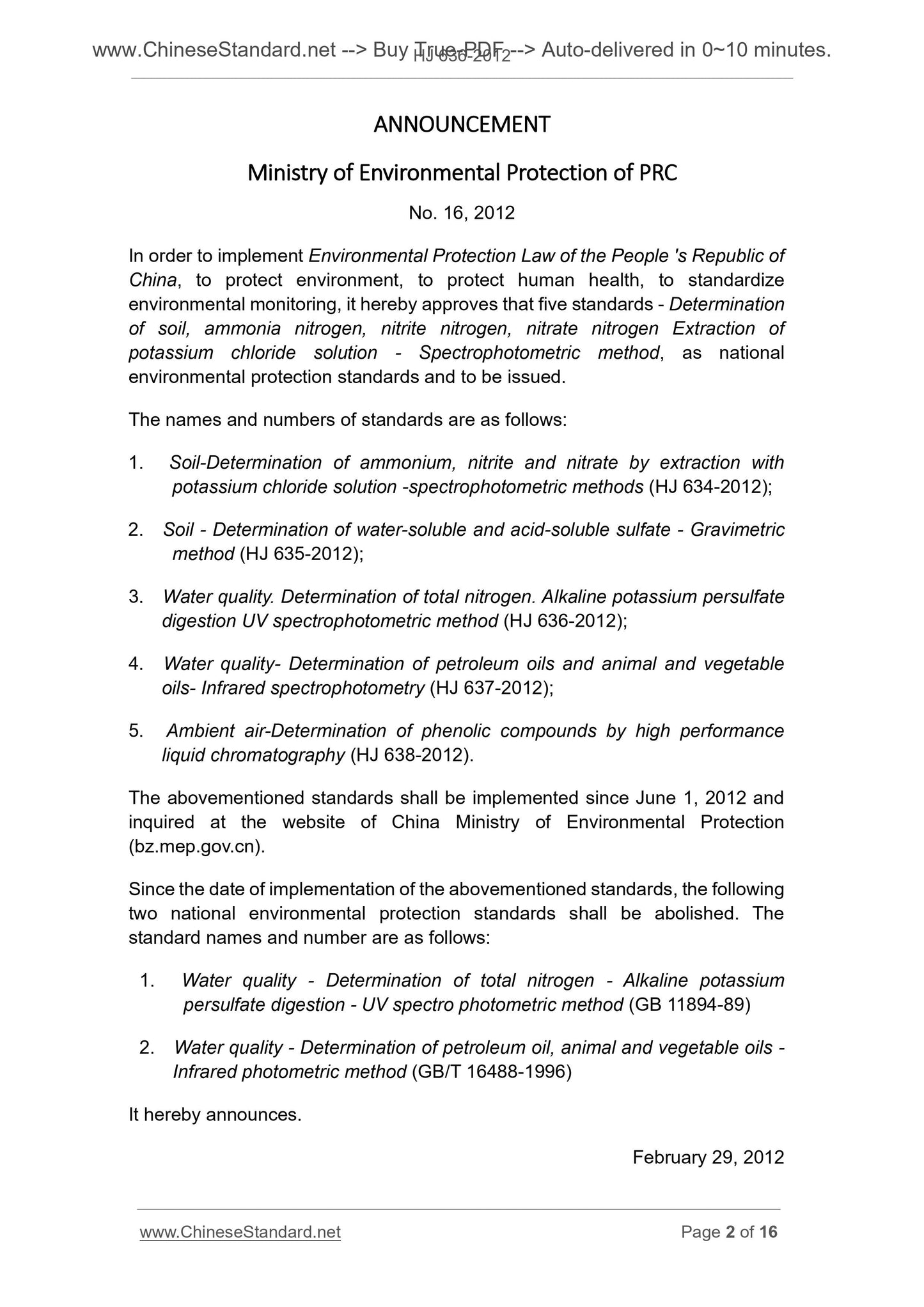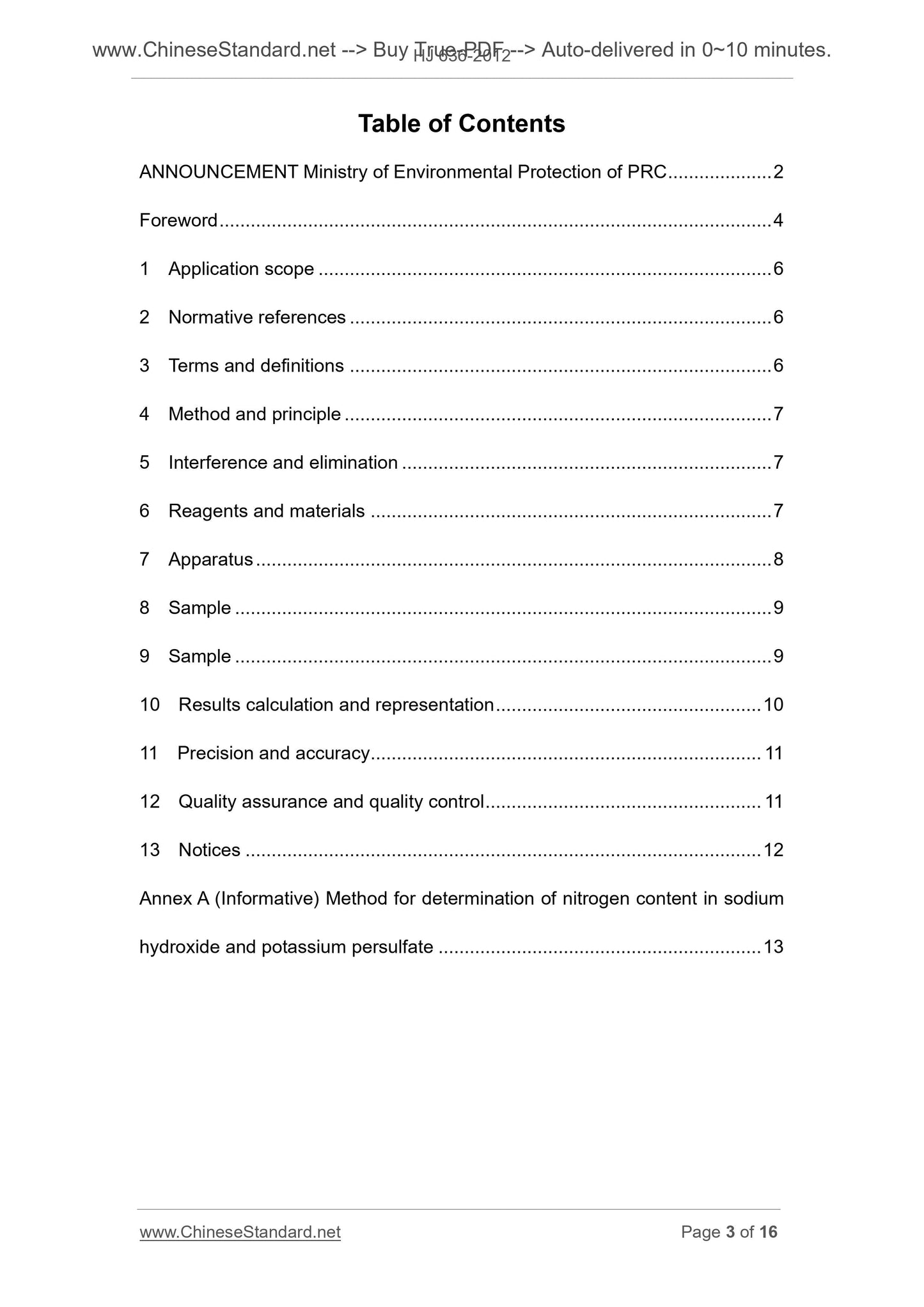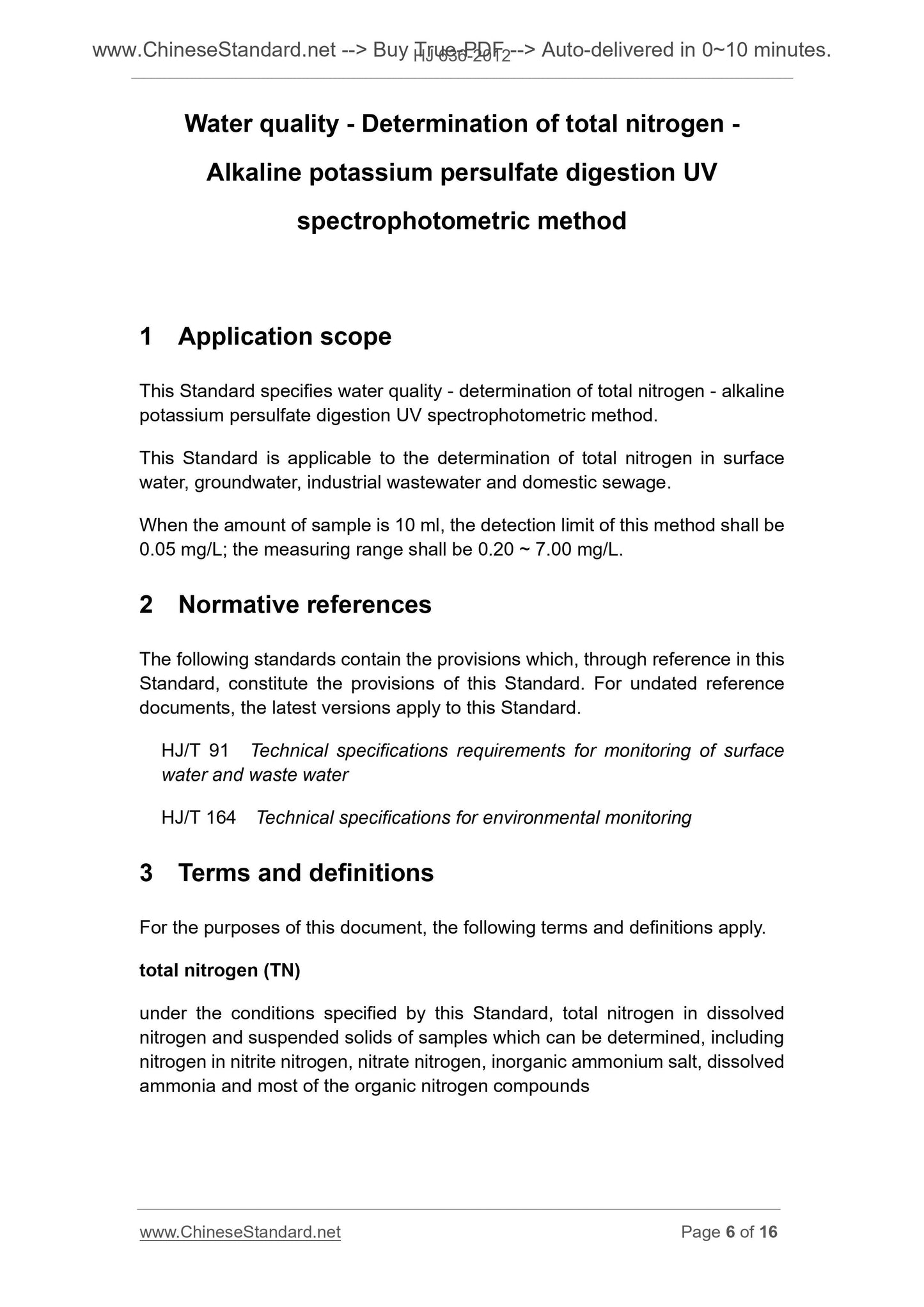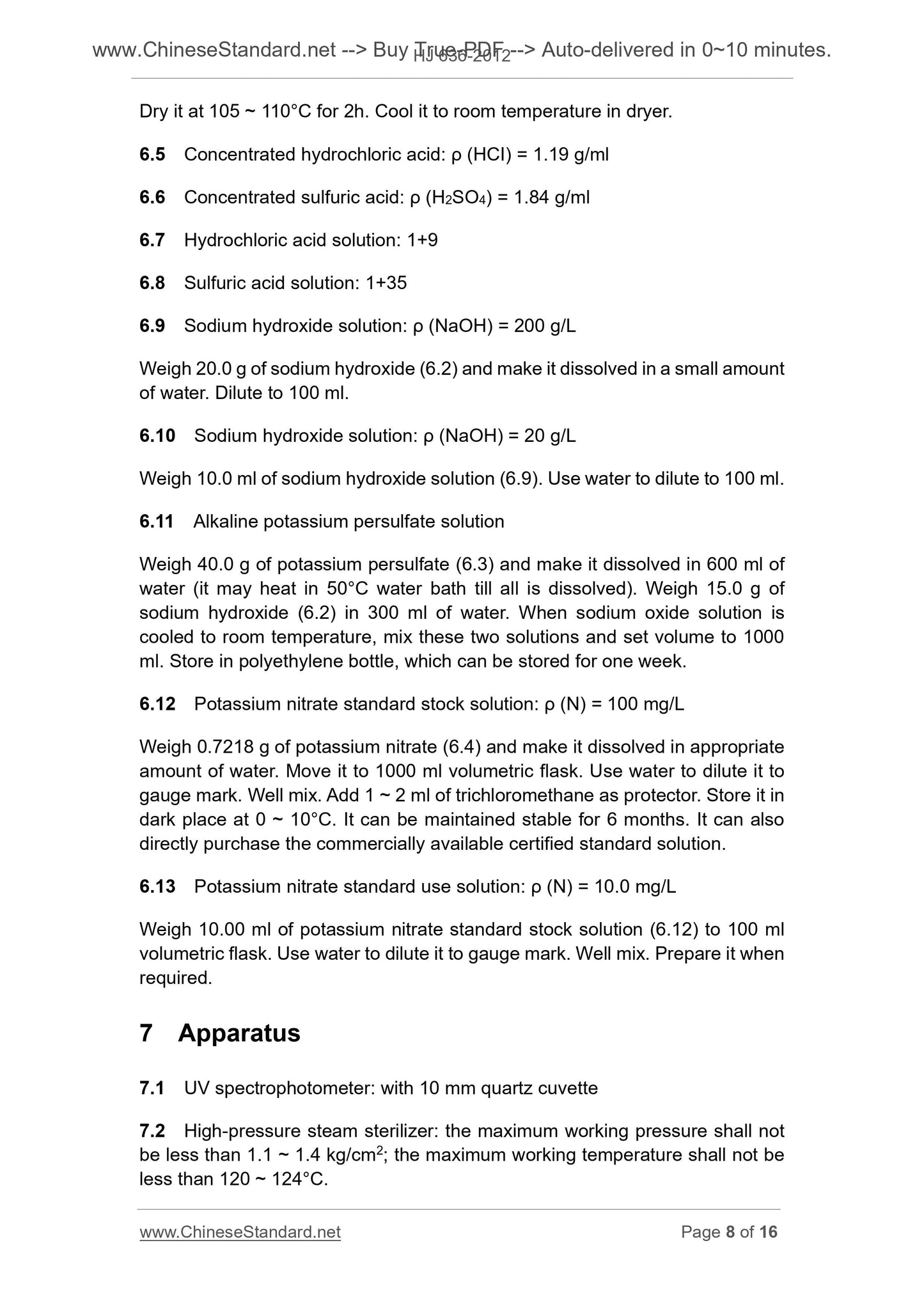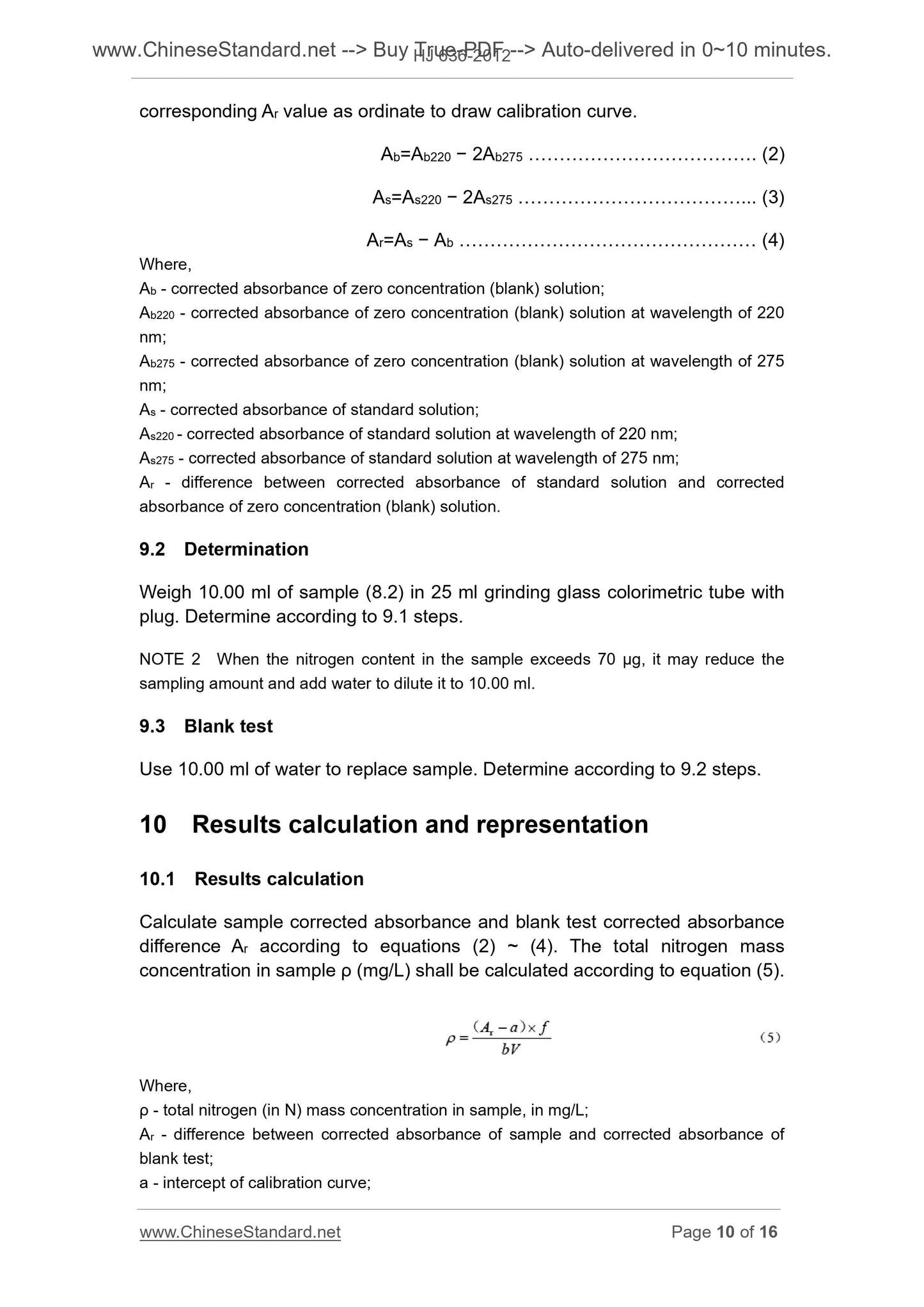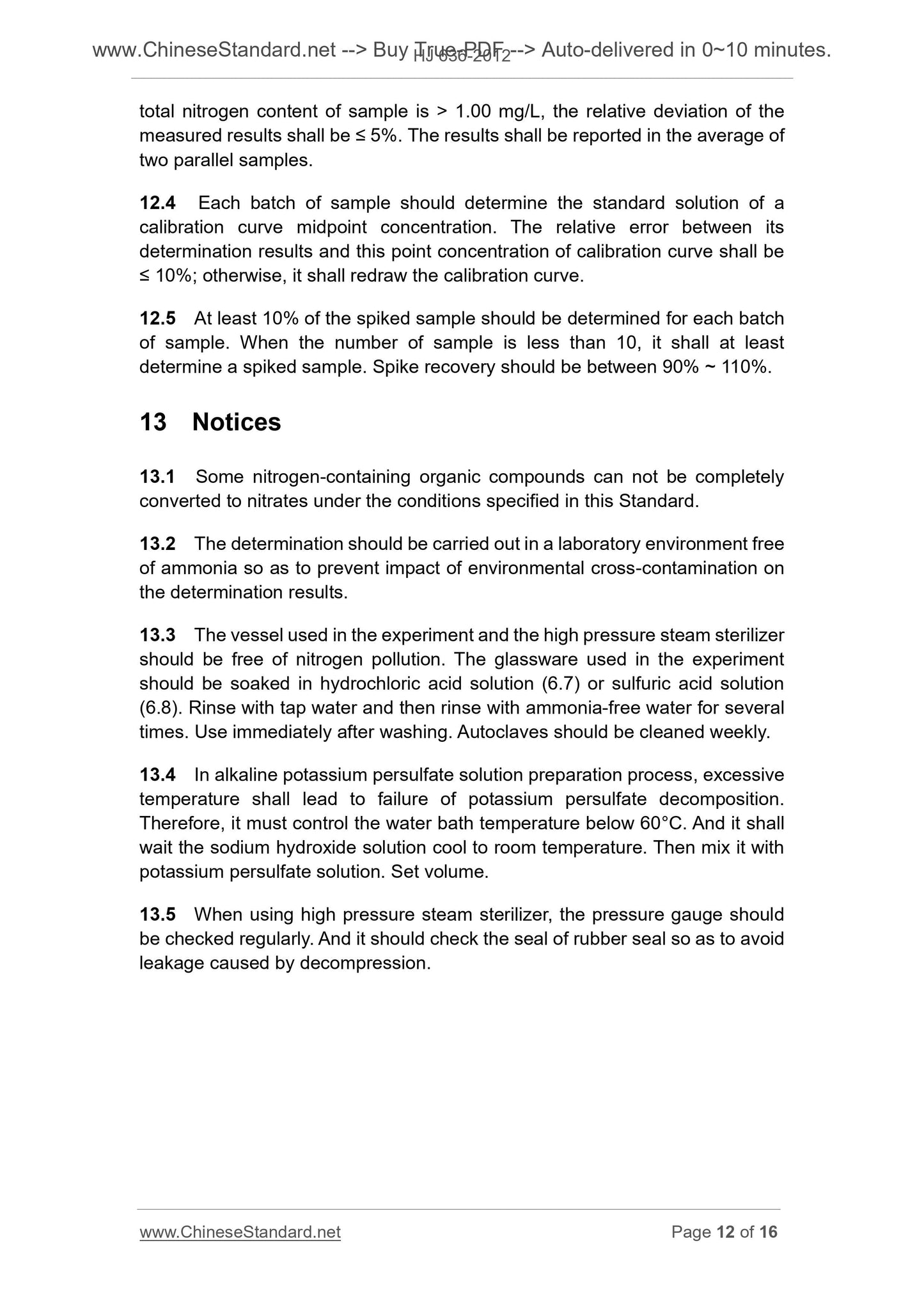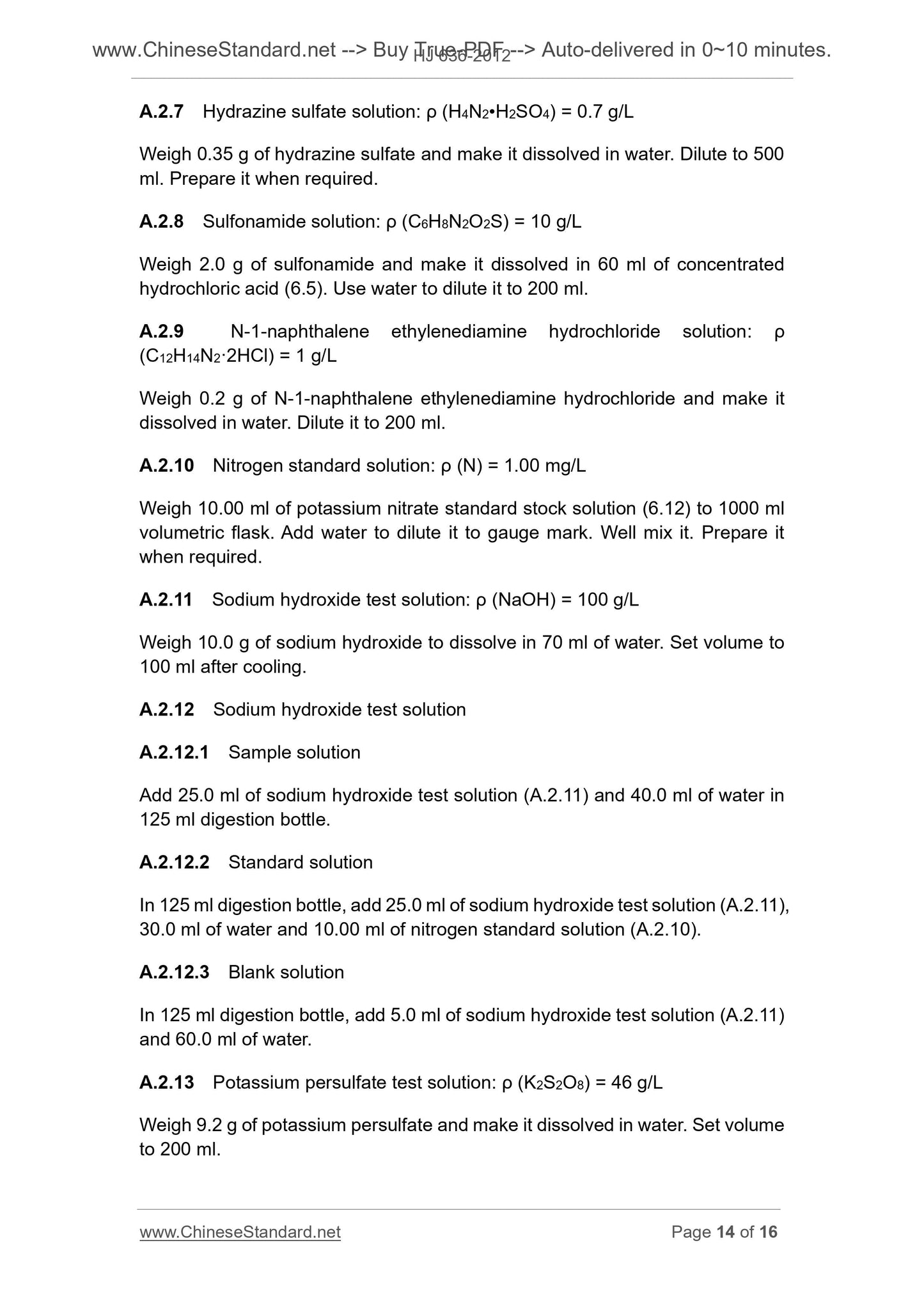1
/
of
9
www.ChineseStandard.us -- Field Test Asia Pte. Ltd.
HJ 636-2012 English PDF
HJ 636-2012 English PDF
Regular price
$85.00
Regular price
Sale price
$85.00
Unit price
/
per
Shipping calculated at checkout.
Couldn't load pickup availability
HJ 636-2012: Water quality - Determination of total nitrogen - Alkaline potassium persulfate digestion UV spectrophotometric method
Delivery: 9 seconds. Download (and Email) true-PDF + Invoice.Get Quotation: Click HJ 636-2012 (Self-service in 1-minute)
Newer / historical versions: HJ 636-2012
Preview True-PDF
Scope
This Standard specifies water quality - determination of total nitrogen - alkalinepotassium persulfate digestion UV spectrophotometric method.
This Standard is applicable to the determination of total nitrogen in surface
water, groundwater, industrial wastewater and domestic sewage.
When the amount of sample is 10 ml, the detection limit of this method shall be
0.05 mg/L; the measuring range shall be 0.20 ~ 7.00 mg/L.
Basic Data
| Standard ID | HJ 636-2012 (HJ636-2012) |
| Description (Translated English) | Water quality - Determination of total nitrogen - Alkaline potassium persulfate digestion UV spectrophotometric method |
| Sector / Industry | Environmental Protection Industry Standard |
| Classification of Chinese Standard | Z16 |
| Classification of International Standard | 13.060.01 |
| Word Count Estimation | 13,124 |
| Older Standard (superseded by this standard) | GB 11894-1989 |
| Quoted Standard | HJ/T 91; HJ/T 164 |
| Regulation (derived from) | Department of Environmental Protection Notice No. 16 of 2012; |
| Issuing agency(ies) | Ministry of Ecology and Environment |
| Summary | This standard specifies the determination of total nitrogen alkaline potassium persulfate digestion spectrophotometry. This standard applies to surface water, groundwater, industrial wastewater and domestic sewage in the determination of total nitrogen. |
Share
